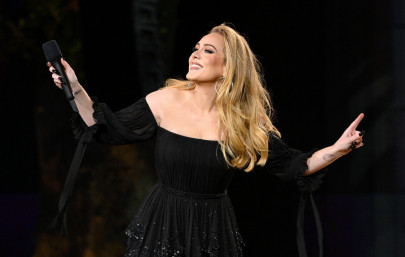
Starting in the 1940s, Frances Glessner Lee, known as the "mother of forensic science," subverted traditionally feminine crafts to make breakthroughs in a male-dominated field of criminal investigation that was then still in its infancy.
Her dollhouse-sized, three-dimensional creations, inspired by true crime scenes, formed the subject of an exhibition that closed Sunday at the Renwick Gallery across from the White House in Washington, the first time all 19 studies still known to exist have been shown to the public.
Crime scene : Use of forensic science must for cracking cases: IG
All but one, known as the "lost nutshell" and on loan from the Society for the Protection of New Hampshire Forests, were loaned from the Harvard Medical School via the Maryland Office of the Chief Medical Examiner (OCME).
The Glessner family donated a tree farm to the New Hampshire society in 1978.
Charming at first glance, the handmade dioramas are also undeniably macabre, featuring the bodies of people who met a variety of grisly fates.
They are meticulously detailed, featuring piles of newspapers or letters in Lilliputian print, an ashtray overflowing with hand-rolled tiny tobacco cigarettes whose ends Lee would burn for added realism, finely knit socks or working window and door locks.
Overturned chairs, blood-spattered sheets or a cake still sitting on an open oven rack next to a dead housewife hint of unspeakable violence frozen in time.
Lee, who died in 1962 and who was in her 60s when she began crafting her dioramas, deliberately chose to feature victims who would otherwise often be overlooked, such as women and the poor, in an effort to help trainees recognize and overcome biases.
NAB establishes forensic science laboratory
Thanks to the hyperreal studies, budding criminal investigators have learned how to approach their trade scientifically, becoming better observers and taking into account all key evidence without mishandling it or tampering with crime scenes.
Lee's "Nutshell Studies of Unexplained Death" are so effective that the Office of the Chief Medical Examiner in Baltimore still uses them today in training seminars.
Lee, America's first female police captain, helped found the Department of Legal Medicine at Harvard University, the first of its kind.
The discoloration of the corpses, the angle of minuscule bullet holes and the blood-spatter patterns are just some of the details meant to give trainees clues to solve crimes and to determine whether a natural death, an accident, a suicide or a murder was at play.
The solution to each crime scene remains a secret, since they are still used for training, but visitors to the Renwick were encouraged to make their own findings, flashlight in hand.
Forbidden by her wealthy parents from attending college, Lee was made to marry at age 19 and had three children.
Only once her marriage had ended in divorce and Lee had obtained an inheritance was she finally able to pursue her interest in forensic pathology.
"Frances Glessner Lee was generous, forward-thinking, persistent, stubborn and innovative," said author and DeSales University forensic psychology professor Katherine Ramsland.
Better investigation: 1,100 cops to get forensic science training
"A fan of Sherlock Holmes and true crime stories, she focused on what mattered to her rather than on what society (and her father) thought was proper."
In photographs from the time, Lee can be seen standing among several dozen police officers, looking stern with her hair gathered in a bun.
"Because she had the means to assist with wide-scale training on such things as the skills of observation, deduction and incident reconstruction, Lee was able to alert thousands of investigators, attorneys and reporters to the nuances of crime that they might not otherwise consider," said Ramsland.
"She also made inroads for women."

1725783822-0/Tribune-Pic-(15)1725783822-0-165x106.webp)















COMMENTS
Comments are moderated and generally will be posted if they are on-topic and not abusive.
For more information, please see our Comments FAQ